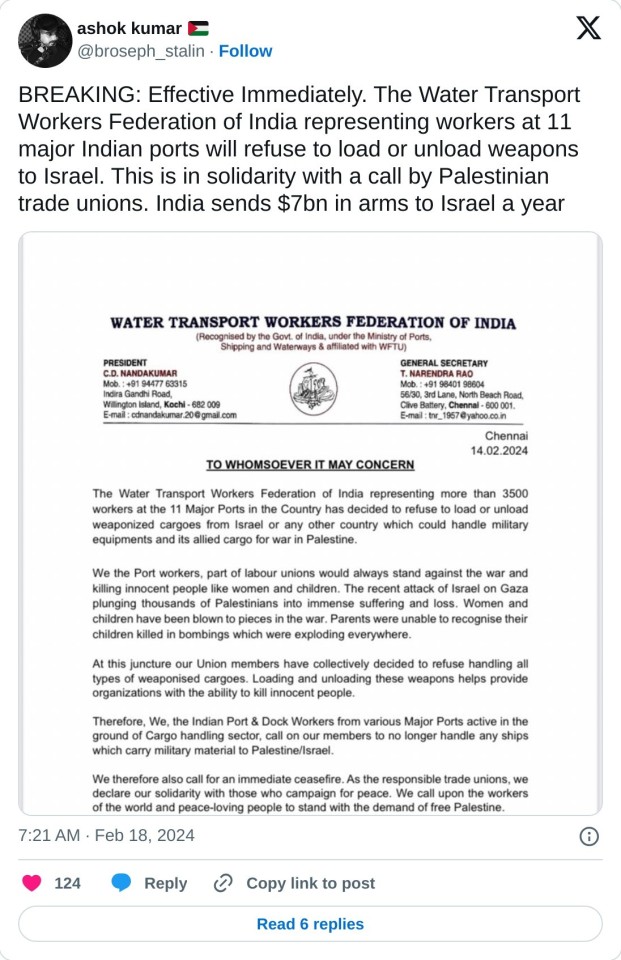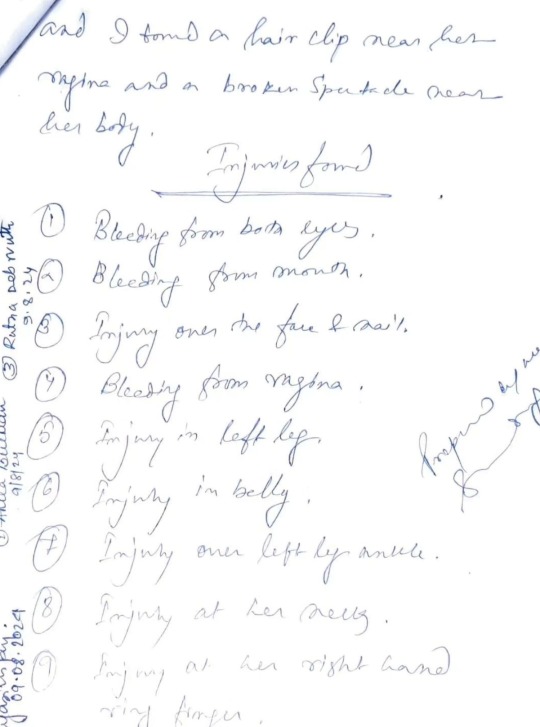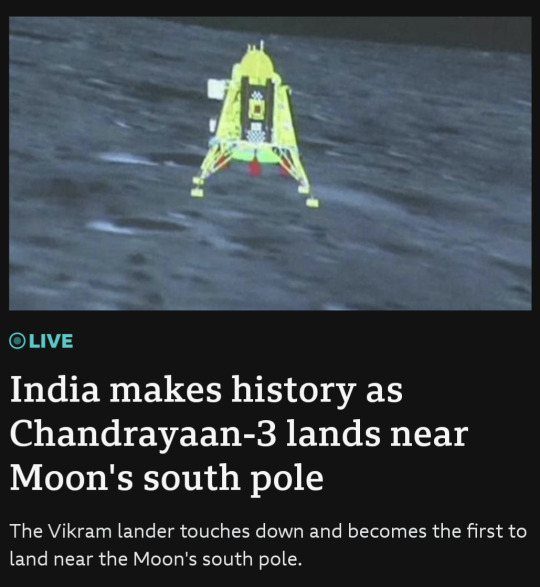#India News News
Explore tagged Tumblr posts
Text

6K notes
·
View notes
Text




#yemen#jerusalem#tel aviv#current events#palestine#free palestine#gaza#free gaza#news on gaza#palestine news#news update#war news#war on gaza#india#boycott divest sanction#direct action#bds movement
15K notes
·
View notes
Text
There was record-breaking clean energy progress all around the world in 2024
"Last week, we shared the news that the U.S. government permanently closed most federal waters — more than 625 million acres — to offshore oil and gas drilling.
It’s a great way to kick off a year of more good climate action. And as the year-end data rolls in, there are even more stories of progress in fighting climate change via transitioning away from fossil fuels toward clean energy sources across the globe. In 2024...
📍 In Great Britain, wind power alone provided more electricity than ever before, and all renewables together generated around 56% of electricity.
📍 In Germany, renewables made up a record 59% of electricity generation and became the “backbone of the system” in the country.
📍 In Poland, a record 29% of its power came from renewable sources, showing great progress in a country that still heavily relies on coal.
📍 In India, the “transformative growth” of its renewable energy sector led to it surpassing 200 GW of installed capacity, making up 46% of the country’s total installed capacity.
→ Read more stories of progress for the planet"
-via GoodGoodGood, January 18, 2025, Source
#environment#climate#climate news#climate change#climate action#renewables#renewable energy#solar power#green energy#wind power#uk#united kingdom#germany#poland#india#europe#asia#good news#hope#hope posting
2K notes
·
View notes
Text
She has not just been raped and murdered, she was very much tortured and brutalized like Nirbhaya. It is all over the Bengali news. I don't understand why no one is talking about this.
A 2nd year Respiratory Medicine in a well known government medical college in Kolkata, West Bengal, India is found in a semi-naked state and the college/ hospital called it a suicide.
I'm a MBBS student in second year. After reading about her, what crossed my mind is the amount of times she would have felt this fear, before this worst fear of hers eventually materialized.
"A young resident doctor was found dead in the seminar room of her medical college in Kolkata. Initial autopsy report suggests possible rape and murder."
As all are saying,
She wasn't walking the street at odd hours. She wasn't wearing clothes that were provocative. She wasn't loitering in dangerous neighbourhoods.
She was a resident doctor, looking for a place to rest in her own hospital.
She had been on duty and had gone to rest in the early hours of Friday.
The one place which was supposed to guarantee her safety failed her, miserably.
Someone comes, rapes a female pg who is merely resting in a seminar hall because there is no proper place for her to rest, brutalized her and kills her. How did NO one know? The college and police initially call it a suicide. Excuse me? It is also being said that under pressure from local politicians, the Principal and Dean attempted to alter the post-mortem report. Autopsy confirms sexual assault.

What are the actions taken? One man arrested because his behavior seemed "shady". This is clearly not an act of one man. And this was a very well aware of and a well executed criminal act.

Also, all this happening in WB right when the situation of bangladesh is in turmoil and news of Bangladeshi Hindus being killed and tortured, seems wrong, VERY WRONG. Happening right before NEET-PG, as 24 lakh doctors prepare to write an exam on Sunday to be resident doctors, this news has wrapped us all in agony and rage,
What are they working so hard for? Why should they aspire to be in a system that ignores their basic needs? The minimum requirement of a workplace is safety. That should be non-negotiable.
This profession demands extereme hardwork, a lot of mental strength and Physical Assaults, harassment, low paying jobs with odd working hours with intense humiliation. Now its the worst of all seeing a bright mind losing her life in the most disrespectful state of all. This should never happen to any woman.
I'd also like to question why isn't any big media house covering this news, where are all the international news channels all this time.
What are the students in other medical colleges doing? This talks about their own safety and lives. What are the medical students across the world doing? It's time for us to stand for the most basic Human right, safety.
Yesterday when my roommate, an MBBS final year intern was heading for her night posting, I feared and prayed for her to come back safely. Thinking about it, in a few years I will also have night posting, I'll also return from my hospital duties late at night. I'll also have to go through the same fear, and I'll also have to keep praying that my worst fears don't turn into reality. So many female doctors, nursing staffs, other Healthcare workers, other working women, non-working women go through the same fear, probably multiple times a day.
It is a shame to be born in such a disgusting world and society, it is shame to witness such a brutal crime, and it is a shame to live in this fear daily.
Those RAPISTS need to be hunged infront of the whole natio...if needed burned alive. People should fear the idea of raping, more than getting raped.
#medicine#desi teen#desi dark academia#desi things#desi girl#desi academia#desi#kolkata#west bengal#bengali#bangla news#bangla#indian#india#indian students#indian aesthetic#desi memes#desi culture#desi life#justice#justiceformoumitadebnath#nirbhaya#rape/noncon#not incorrect quotes#junko furuta#crimes against humanity#crime against humanity#crime against women#doctor#r g kar
1K notes
·
View notes
Text

The Allies during World War II
The Axis here
#hetalia#historical hetalia#hws allies#hws england#hws russia#hws america#hws france#hws china#hws canada#hws poland#hws czechia#hws belgium#hws australia#hws norway#hws greece#hws netherlands#hws new zealand#hws india#hws cuba#hws philippines#hws luxembourg#had a go at drawing the all the allies in their uniforms and with certain elements that fits the 1930s and 40s#this list of allies is based on canon countries with governments in exile and alliances with the Allies#this was such a fun project - very time consuming but fun#and some of the uniforms are pre 1940s just because :)))
576 notes
·
View notes
Text






protests erupt in various parts of India demanding the government to stop arming israel while expressing support for the Palestinians. the above photos are from Jantar Mantar, New Delhi.
pc
2K notes
·
View notes
Text
Delhi recorded an all-time high temperature of 52.9 degrees Celsius (127.22 Fahrenheit) on Wednesday (May 29) as extreme heat conditions gripped the north and western parts of India, causing students to faint in schools and drinking water taps to dry up. A heat wave alert has been in place for large parts of India since last week but on Wednesday the temperature in Mungeshpur, a densely packed corner of Delhi, crossed the 50 C mark, the weather office said. The Indian capital has had temperatures of over 45 C in previous years but never gone as high as 52.9 C.
Continue Reading
824 notes
·
View notes
Text
India's Rail Network Runs on 96% Electricity

Image and text from this Fast Company article:
By the end of the year, India’s main rail network—around 40,000 miles long—could be 100% electrified. It’s more than 96% electrified now. In the U.S., by contrast, that number is around 1%. “India has been such an amazing example of a rapid transition of a diesel rail system to an electric rail system,” says Yasmine Agelidis, senior attorney at Earthjustice, an environmental nonprofit advocating for the U.S. to move to zero-emissions trains. “It’s a great model for the U.S. to look at because India had a lot of diesel rail already, and the U.S. is in a similar boat.”
#train#renewable energy#clean energy#green energy#electrification#electric revolution#good news#hope#hopepunk#climate change#rail system#electric rail#india#newyears2025#global warming#climate anxiety#ecoanxiety#ecogrief#climate grief
256 notes
·
View notes
Text
so far, nearly 3 weeks on from the inauguration of ram mandir, indian authorities have demolished as many masjids and/or madrasas.
30.01.24 - akhoonji masjid & madrasa in delhi, also destroying a cemetery, shrine and all the students’ belongings in the process.
01.02.24 - a madrasa in maharashtra despite facing opposition from local muslims and one day before its scheduled court appeal.
08.02.24 - a masjid & madrasa in uttarakhand. this comes one day after uttarakhand became the first state to pass the uniform civil code (x, x) which aims to apply a ‘hindu code’ to all indians, infringing on the rights of dalits, adivasis, sikhs, christians, buddhists and muslims (i.e. anybody non-hindu) to practice their religion/lifestyle. muslim women protesting the demolition were lathi-charged (beaten with sticks) by police, a shoot-on-sight order was given resulting in 6 muslims killed and 300+ injured in the riots that followed, a curfew was put in place during which hindutva mobs burned down muslim homes and businesses while shouting abuse at muslims.
as always, no prior notice was given and bjp used it’s gold-standard excuse for each demolition, citing ‘illegal encroachment’.
in addition to these masjid demolitions, indian authorities bulldozed 2 neighbourhoods (ghettos, really) in the same timeframe and also without prior notice:
01.02.24 - jasola slum, which, having been around for at least 16 years, should not have been demolished without providing alternative housing, as the delhi slum policy states for slums which came up before 2015. obviously, housing hasn’t been provided.
06.02.24 - panchsheel nagar in mumbai which, having been around since 2011, entitled residents to paid rehabilitation, which has also not been given. this has left over 110 families homeless.
the demographic of both neighbourhoods, surprise surprise, is overwhelmingly muslim, buddhist and dalit.
bjp is enjoying the cover it is receiving from israel’s genocide in palestine to do whatever it wants and is getting bolder by the day. this ‘bulldozer justice’ has been happening for years, but not at such a rapid rate as it is now.
#and bjp’s crimes are always underreported or not reported at all in mainstream news anyway#india#m#!
1K notes
·
View notes
Text

#narendra modi#desiblr#desi humor#desi girl#desi tag#being desi#desi memes#india elections#indian elections#elections#election 2024#bjp#anti bjp#Congress#desi tumblr#lol#.jpg#india news#indpol#indian politics
743 notes
·
View notes
Text


500 notes
·
View notes
Text




#yemen#jerusalem#tel aviv#current events#palestine#free palestine#gaza#free gaza#news on gaza#palestine news#news update#war news#war on gaza#india#nuseirat refugee camp#unrwa#gaza genocide#genocide
3K notes
·
View notes
Text
"When a severe water shortage hit the Indian city of Kozhikode in the state of Kerala, a group of engineers turned to science fiction to keep the taps running.
Like everyone else in the city, engineering student Swapnil Shrivastav received a ration of two buckets of water a day collected from India’s arsenal of small water towers.
It was a ‘watershed’ moment for Shrivastav, who according to the BBC had won a student competition four years earlier on the subject of tackling water scarcity, and armed with a hypothetical template from the original Star Wars films, Shrivastav and two partners set to work harvesting water from the humid air.
“One element of inspiration was from Star Wars where there’s an air-to-water device. I thought why don’t we give it a try? It was more of a curiosity project,” he told the BBC.
According to ‘Wookiepedia’ a ‘moisture vaporator’ is a device used on moisture farms to capture water from a dry planet’s atmosphere, like Tatooine, where protagonist Luke Skywalker grew up.
This fictional device functions according to Star Wars lore by coaxing moisture from the air by means of refrigerated condensers, which generate low-energy ionization fields. Captured water is then pumped or gravity-directed into a storage cistern that adjusts its pH levels. Vaporators are capable of collecting 1.5 liters of water per day.

Pictured: Moisture vaporators on the largely abandoned Star Wars film set of Mos Espa, in Tunisia
If science fiction authors could come up with the particulars of such a device, Shrivastav must have felt his had a good chance of succeeding. He and colleagues Govinda Balaji and Venkatesh Raja founded Uravu Labs, a Bangalore-based startup in 2019.
Their initial offering is a machine that converts air to water using a liquid desiccant. Absorbing moisture from the air, sunlight or renewable energy heats the desiccant to around 100°F which releases the captured moisture into a chamber where it’s condensed into drinking water.
The whole process takes 12 hours but can produce a staggering 2,000 liters, or about 500 gallons of drinking-quality water per day. [Note: that IS staggering! That's huge!!] Uravu has since had to adjust course due to the cost of manufacturing and running the machines—it’s just too high for civic use with current materials technology.
“We had to shift to commercial consumption applications as they were ready to pay us and it’s a sustainability driver for them,” Shrivastav explained. This pivot has so far been enough to keep the start-up afloat, and they produce water for 40 different hospitality clients.
Looking ahead, Shrivastav, Raja, and Balaji are planning to investigate whether the desiccant can be made more efficient; can it work at a lower temperature to reduce running costs, or is there another material altogether that might prove more cost-effective?
They’re also looking at running their device attached to data centers in a pilot project that would see them utilize the waste heat coming off the centers to heat the desiccant."
-via Good News Network, May 30, 2024
#water#india#kerala#Kozhikode#science and technology#clean water#water access#drinking water#drought#climate change#climate crisis#climate action#climate adaptation#green tech#sustainability#water shortage#good news#hope#star wars#tatooine
1K notes
·
View notes
Text

december 31, 2006
252 notes
·
View notes
Text

what an amazing day to be Indian ❤️ Congratulations to the physicists, engineers, scientists and all staff involved, this is outstanding 🎉
2K notes
·
View notes